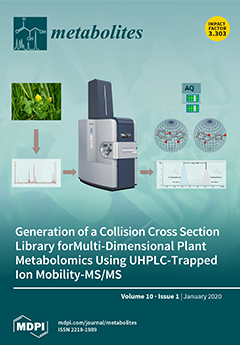Background:
Styrax tonkinensis is an economic tree species with high timber, medicine, oil, and ornamental value. Its seed, containing a particularly high oil content, are widely studied for their biodiesel properties by nutritional components and oil body ultrastructure. However, their comprehensive biochemical compositions
[...] Read more.
Background:
Styrax tonkinensis is an economic tree species with high timber, medicine, oil, and ornamental value. Its seed, containing a particularly high oil content, are widely studied for their biodiesel properties by nutritional components and oil body ultrastructure. However, their comprehensive biochemical compositions have not been studied. Methods: During
S. tonkinensis kernel development, we collected samples from four time points for metabolite profiling and classification through gas chromatography-mass spectrometry and liquid chromatography-mass spectrometry. Results: A total of 187 and 1556 metabolites were obtained, respectively. All of the metabolites were grouped into 19 and 21 classes by their chemical properties and into 8 clusters based on their change trends, respectively. Among all the metabolites, carboxylic acids and derivatives, flavonoids, fatty acyls, glycerophospholipids, organooxygen compounds, prenol lipids, and steroids and steroid derivatives were the main components. Alanine, glutamine, tryptophan, tyrosine and valine were the five most abundant amino acids. Palmitic acid, stearic acid, oleic acid and linoleic acid were the four major free fatty acids. Flavans, flavonoid glycosides and o-methylated flavonoids were the three major flavonoids. The differential metabolites distributions between different time points were identified. A pathway enrichment was performed, which was mainly focused on three groups, amino acids metabolism, carbon flow from sucrose to lipid and secondary metabolites biosynthesis. Conclusions: It’s the first time to analyze the metabolite fingerprinting for developing
S. tonkinensis kernels and identify varied kinds of flavonoids. We performed metabolite profiling, classification and pathway enrichment to assess the comprehensive biochemical compositions. Our results described the change in major metabolites and main metabolic processes during
S. tonkinensis kernel development and provided a variety of bases for seed applications as biofuel or medicine.
Full article






